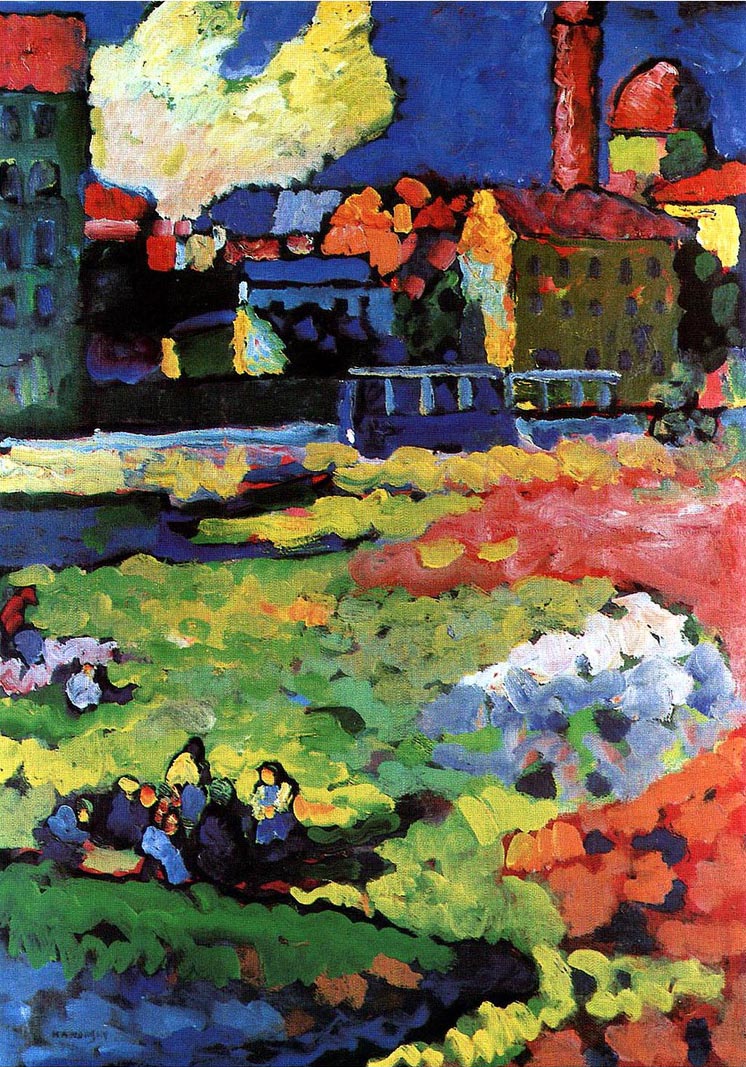"Munich-Schwabing with the Church of St. Ursula" is a painting created by Russian artist Wassily Kandinsky in 1908. It is an oil on cardboard work, measuring 111 x 87 cm, and is currently housed in the Lenbachhaus Museum in Munich, Germany.
The painting depicts a street in the Schwabing neighborhood of Munich, with the Church of St. Ursula visible in the background. Kandinsky was living in Munich at the time and was a member of the Neue Künstlervereinigung, a group of artists who sought to break away from traditional art forms and create new, more abstract works.
"Munich-Schwabing with the Church of St. Ursula" is a prime example of Kandinsky's early work, which was heavily influenced by the Art Nouveau movement and the Fauvist style. The painting features bold, bright colors and thick, sweeping brushstrokes, which give it a sense of movement and energy.
Despite the seemingly representational subject matter, Kandinsky's painting is not meant to be a realistic depiction of the street scene. Rather, it is a study in color and form, with the artist experimenting with different combinations and patterns to create a sense of harmony and balance.
Overall, "Munich-Schwabing with the Church of St. Ursula" is an important work in the development of abstract art, and is widely regarded as a masterpiece of the early 20th century.

